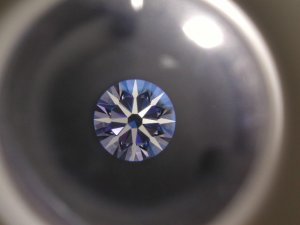echelon6
Shiny_Rock
- Joined
- Jul 5, 2007
- Messages
- 260
Hi all. Hoping some experts can chime in with regards to any vices that may be evident in this stone:
1.588ct
Diameter: 7.46-7.48mm
Depth: 61.8% (too deep?)
Table: 56.2%
Crown angle: 34.8 (34.6 - 34.9)
Pavilion angle: 40.8 (40.7 - 40.9)
Crown height: 15.3%
Pavilion depth: 43.1%
Star/Upper ratio: 51:49
Lower Girdle Halves: 74%
Very worried about the Lower Girdle Halves ratio of 74%, I don''t want a dark diamond, but I like fire more than white light. Can I pls get some expert opinions on this?
Also I read (but didn''t understand fully) that there are certain combinations of Star% vs LGF%s that make the stone just fine, so does the above stone have a good combination?
Thanks
1.588ct
Diameter: 7.46-7.48mm
Depth: 61.8% (too deep?)
Table: 56.2%
Crown angle: 34.8 (34.6 - 34.9)
Pavilion angle: 40.8 (40.7 - 40.9)
Crown height: 15.3%
Pavilion depth: 43.1%
Star/Upper ratio: 51:49
Lower Girdle Halves: 74%
Very worried about the Lower Girdle Halves ratio of 74%, I don''t want a dark diamond, but I like fire more than white light. Can I pls get some expert opinions on this?
Also I read (but didn''t understand fully) that there are certain combinations of Star% vs LGF%s that make the stone just fine, so does the above stone have a good combination?
Thanks






300x240.png)